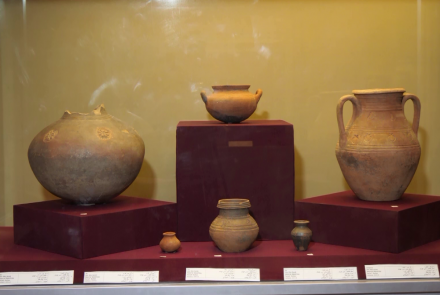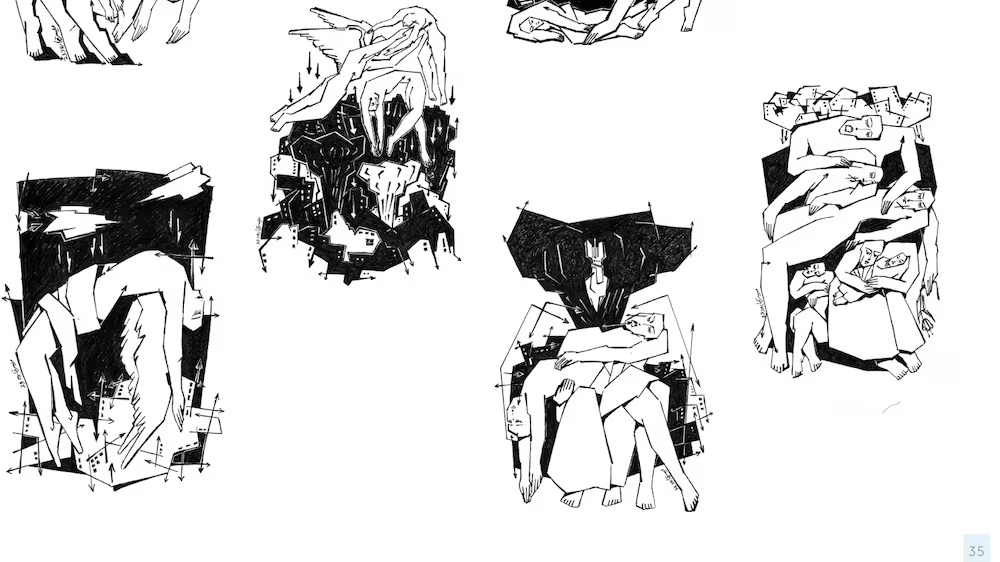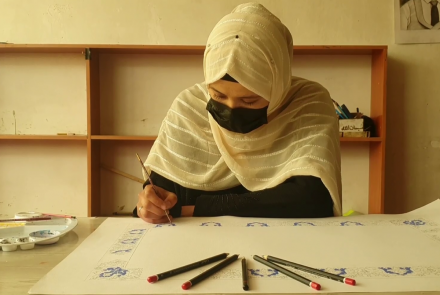
LONDON (IHA) : Arare manuscript of the Qur’an, commissioned by Münire Sultan, the daughter of Sultan Abdülmecid I., fetched 114,300 pounds (approximately $144,000) at Sotheby’s Auction House in London, marking a record sale in an auction showcasing the “Islamic World and Arts of India.”
Numerous works were sold at the auction, titled “Arts of the Islamic World and India” held Thursday at Sotheby’s Auction House in the capital of the U.K., London. The elaborately illuminated Quran commissioned by Sultan Abdülmecid I’s daughter Münire Sultan in 1860 was sold for a record price. The work, written by calligrapher Ibrahim Hakkı, a popular Turkish Sufi of the Ottoman Empire from Erzurum in eastern Anatolia who was a polymath, was valued at 70,000 pounds to 90,000 pounds, found a buyer for 114,300 pounds.

Known to be commissioned on behalf of Münire Sultan’s husband Ibrahim Ilhami Pasha, this Ottoman work is considered one of the finest examples of Turkish rococo that marked the 18th and, particularly, the 19th century. Besides various works by Ottoman calligraphers, items such as Iznik tiles, silk prayer rugs, wine flasks, kilims, daggers and cup sets were sold for thousands of pounds at the auction.
According to allegations, a range of valuable artifacts, purportedly smuggled from Türkiye, were presented to new owners at the auction. Among the items were a prayer rug, a brass candlestick from the era of Sultan Suleiman the Magnificent dating back to 1539, a brass candle holder crafted for Albanian-born Ottoman Grand Vizier Koca Sinan Pasha, Hafız Yusuf’s meticulously crafted 1712 manuscript of “Delail’ül-Hayrat,” a handwritten treatise from the 17th century, an Ottoman dagger from the 17th century adorned with gold and silver, a 1682-1683 Naskh Quran by Seyyid Ahmed bin Musa, a 1796-97 Naskh Quran by calligrapher Mehmed Emin Efendi, an Ottoman agate cup set embellished with sapphires and emeralds dating back to the 17th century, an Ottoman silk carpet dating to the early 1900s, a 1590 Iznik ceramic cup, a marble fountain from the Tulip Period, a 19th-century prayer rug from Konya, a Anatolian-made prayer rug from the 18th century, Ottoman silver plates from the 18th century, an oil painting portrait of Ottoman prince Musa Çelebi, a Naskh Quran from 1804 by calligrapher Mustafa Rakım and a 1730s calligraphic exercise album by Mehmed Şehri.








